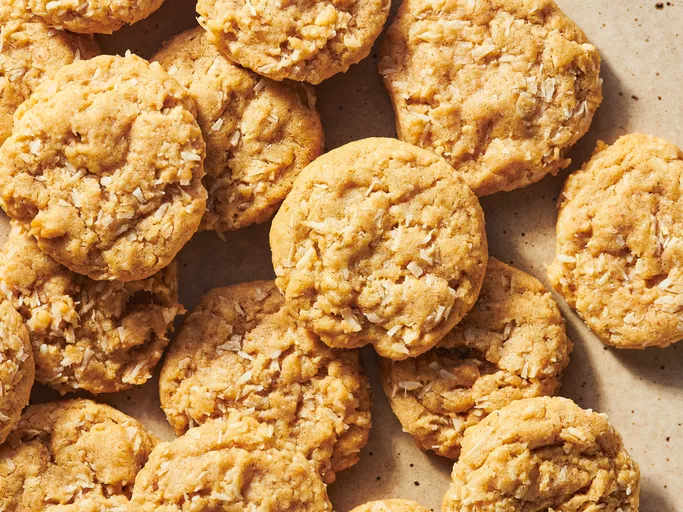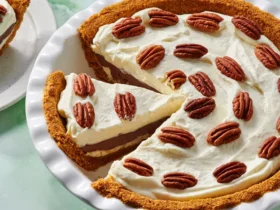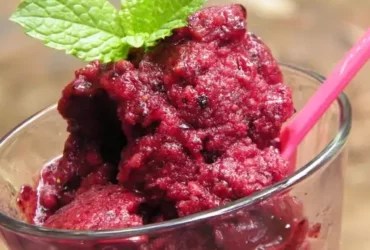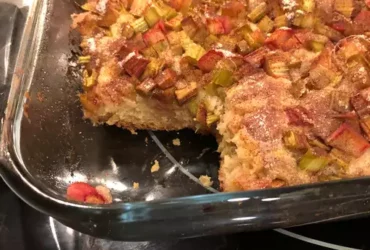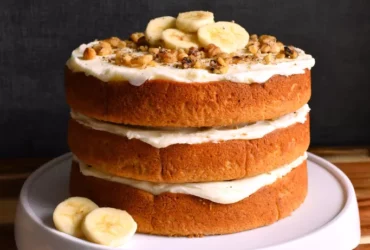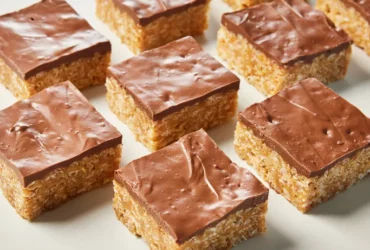Ingredients
Essential Ingredients
The world of baking relies heavily on the careful selection of ingredients, with some being more crucial than others in determining the success or failure of a recipe. In the case of the Chewy Coconut Cookies recipe, certain ingredients are considered essential and play a significant role in achieving the perfect texture, flavor, and aroma.
One such essential ingredient is butter, which serves as the primary fat source in this recipe. The use of high-quality butter contributes to the richness and depth of flavor in the cookies, while also affecting their tenderness. As it melts during baking, it helps to create a chewy texture that’s both inviting and indulgent.
Sugar, another vital component, adds sweetness and a subtle caramel flavor to the cookies. There are different types of sugar available, but for this recipe, granulated sugar is preferred due to its ability to dissolve evenly during baking, ensuring that the cookies remain soft and chewy on the inside and crispy at the edges.
Large eggs act as both leavening agents and moisture reservoirs in the cookie dough. They contribute to the structure and texture of the cookies while also providing a subtle richness and depth of flavor. Using room-temperature eggs helps them mix more smoothly with other ingredients, creating an evenly textured batter that bakes up perfectly.
Vanilla extract, an essential flavor enhancer, adds a delicate yet noticeable taste to the cookies. High-quality vanilla extract is crucial as it contributes a rich and creamy flavor without overpowering the coconut or other ingredients. A small amount of vanilla extract goes a long way, so use it sparingly to achieve the perfect balance.
Coconut flakes serve as both texture and flavor enhancers in this recipe. They contribute to the chewy texture of the cookies while adding a distinct tropical flavor that’s balanced by the sweetness of sugar and the richness of butter. Choose unsweetened coconut flakes for a more natural taste, and ensure they’re evenly distributed throughout the cookie dough.
Finally, baking powder acts as the leavening agent in this recipe, contributing to the lightness and texture of the cookies. It helps them rise during baking while maintaining their chewy consistency on the inside and crispy edges on the outside. Use a high-quality baking powder to ensure that your cookies have the perfect balance of texture and flavor.
The success of Chewy Coconut Cookies lies not just in their delicious flavor, but also in the quality and combination of ingredients used.
For the base of these cookies, we’ll be using a classic combination of butter and sugar. Unsalted butter provides a richness to the cookies without being overly greasy, while white granulated sugar adds sweetness without a strong flavor of its own.
Brown sugar is also included for its deep caramel-like taste that complements the coconut well. Its moisture content helps keep the cookies chewy on the inside and crispy on the outside.
The role of eggs in baked goods like these cookies can be multifaceted: they contribute to the structure, richness, and moisture level. In this recipe, two large eggs serve as both a leavening agent and emulsifier, ensuring that the butter and sugar mix well with the dry ingredients.
Vanilla extract is added for its distinct flavor but also as an enhancer of all other flavors in the cookies. It can be substituted with vanilla powder or even omitted altogether if no flavor enhancement is desired.
The use of all-purpose flour as the main structural component ensures that the cookies maintain their shape and provide a satisfying chewiness when biting into them. It’s essential to not overmix this ingredient with other components to avoid developing the gluten, which could give the cookies an unpleasant texture.
Coconut adds a tropical flavor and a delightful textural contrast within the cookies. You can choose between shredded or flaked coconut for different textures; however, keep in mind that each has its unique taste as well.
A pinch of salt enhances all other flavors in these cookies by cutting their sweetness slightly but also amplifying them in general. The type of salt used is less crucial than the quantity because too much can make the cookies overly savory rather than balanced.
1 cup unsalted butter (softened)
The first ingredient in our Chewy Coconut Cookies recipe is a crucial component that adds moisture, flavor, and tenderness to the cookies.
Cup unsalted butter (softened) is the primary fat source in this recipe, which means it provides richness, flavor, and helps bind the ingredients together. The use of softened butter ensures that it is pliable and easy to mix with other ingredients, making it an essential component for achieving a chewy texture.
The quality of the butter used can greatly impact the final product’s flavor and texture. For this recipe, we recommend using high-quality unsalted butter that has not been hydrogenated or processed excessively. This will ensure that the cookies have a clean, rich taste without any artificial additives or preservatives.
When choosing unsalted butter, look for products with minimal ingredients and no added flavorings. The ideal option would be a European-style or cultured butter, which often has a higher fat content and more pronounced flavor profile than regular American butter.
It’s worth noting that the amount of butter used in this recipe is substantial, so make sure to soften it properly before mixing it with other ingredients. This can be done by leaving the butter at room temperature for about 30 minutes or microwaving it for short intervals until softened and pliable.
3/4 cup granulated sugar
When it comes to ingredients for the Chewy Coconut Cookies Recipe, you’ll need a combination of everyday pantry staples and some more exotic ingredients like coconut to create the perfect chewy texture.
Here’s a breakdown of what you’ll need:
Main Ingredients
- Butter: 1 cup (2 sticks) at room temperature
- Sugar
- Granulated Sugar: 3/4 cup. Granulated sugar adds sweetness and tenderness to the cookies.
- Eggs: 2 large eggs at room temperature
- Vanilla Extract: 1 teaspoon. Use high-quality vanilla extract for the best flavor.
Coconut Ingredients
- Sweetened Coconut Flakes: 3/4 cup. Sweetened coconut flakes add a sweet and chewy texture to the cookies.
Pantry Staples
- All-Purpose Flour: 2 1/4 cups. Use all-purpose flour for its neutral flavor and ability to hold the coconut flakes together.
- Baking Soda: 1 teaspoon. Baking soda helps to balance the acidity in the cookies and promote even baking.
- Salt: 1/4 teaspoon. Salt enhances the flavor of the cookies and helps to regulate yeast growth (if using active dry yeast).
Optional Ingredients
- Chopped Macadamia Nuts or Chopped Pecans: 1/2 cup. Add a crunchy texture with chopped macadamia nuts or pecans.
Remember to adjust the amount of sugar according to your preference and the type of coconut flakes you use.
1 cup brown sugar
Brown sugar plays a crucial role in the texture and flavor of chewy coconut cookies.
One cup of brown sugar contributes significantly to the overall sweetness and rich, caramel-like flavor that these cookies are known for.
The high moisture content in brown sugar helps retain moisture within the cookies, ensuring they remain soft and chewy even after baking.
Brown sugar also enhances browning reactions during baking, which leads to a golden-brown color on the surface of the cookies.
When using brown sugar in cookie recipes like this one for Chewy Coconut Cookies, it’s essential to note that packed brown sugar is not always the same as unpacked or loose brown sugar.
Packed brown sugar has been compacted to remove air pockets and can have a slightly different texture compared to unpacked brown sugar. If you’re unsure, use a measuring spoon to scoop the brown sugar into your mixing bowl, ensuring it’s packed tightly in the spoon before leveling off with a straight edge or knife.
Keep in mind that substituting white granulated sugar for brown sugar may significantly change the flavor and texture of these cookies. Brown sugar adds an element of depth and chewiness that might not be replicable with refined sugars.
In terms of ratio, one cup of brown sugar can generally be used as a direct substitute in many recipes where brown sugar is called for, but it’s always best to adjust according to specific ingredient proportions within the recipe you’re using.
2 large eggs
The ingredients for this delicious Chewy Coconut Cookies Recipe include:
The eggs are an essential component in this recipe, providing moisture and richness to the cookies. When selecting eggs for baking, it’s best to choose fresh, high-quality eggs that have not been previously refrigerated. Fresh eggs will result in a better texture and flavor in your finished cookies.
It’s also worth noting that using room temperature eggs is important when making this recipe. This allows the eggs to mix more easily with the other ingredients, resulting in a smooth and consistent dough. To bring your eggs to room temperature quickly, simply submerge them in a bowl of warm water for about 5-10 minutes.
Once you have your eggs ready, crack them into a large mixing bowl and set aside for now. You’ll be using them along with other ingredients like coconut oil, sugar, vanilla extract, flour, baking powder, salt, shredded coconut, and chocolate chips to create this mouthwatering chewy cookie recipe.
2 teaspoons pure vanilla extract
The ingredient that plays a crucial role in enhancing the flavor and aroma of the Chewy Coconut Cookies recipe is 2 teaspoons of pure vanilla extract.
Pure vanilla extract is obtained from the seed pods of the Vanilla orchid, specifically the species Vanilla planifolia.
The extraction process involves curing the seed pods in hot water to release the enzymes that break down the complex compounds within the pods.
These compounds are then extracted and concentrated into a syrup-like liquid called vanilla extract.
The resulting pure vanilla extract is highly aromatic and has a rich, sweet flavor profile that is essential to many baked goods, including the Chewy Coconut Cookies recipe.
In this specific recipe, 2 teaspoons of pure vanilla extract are used to add depth and complexity to the cookies.
When choosing a vanilla extract for your baking needs, look for a high-quality product that contains only real vanilla beans and no artificial flavorings or preservatives.
This will ensure that your baked goods retain the authentic flavor and aroma of pure vanilla extract.
- Main benefits: Adds depth and complexity to cookies; enhances flavor and aroma
- Culinary use: Used in baking, desserts, and sweet treats
- Taste profile: Rich, sweet, creamy
- Extraction process: Obtained from Vanilla orchid seed pods through hot water curing and extraction
- Main ingredients: Real vanilla beans (no artificial flavorings or preservatives)
Overall, 2 teaspoons of pure vanilla extract play a vital role in the Chewy Coconut Cookies recipe by adding a rich, sweet, and creamy flavor that complements the coconut and other ingredients perfectly.
2 1/4 cups allpurpose flour
The star ingredient in this Chewy Coconut Cookies Recipe is all-purpose flour, which makes up a significant portion of the cookie’s structure and texture.
In this recipe, we need 2 1/4 cups of all-purpose flour to provide a solid foundation for our cookies to hold their shape and retain moisture.
Here are some characteristics that make all-purpose flour an ideal choice:
- Neutral flavor: All-purpose flour has a neutral taste, allowing the flavors of other ingredients like coconut and sugar to shine through.
- High starch content: All-purpose flour contains a high amount of starch, which helps to create a tender and chewy texture in our cookies.
- Good all-around performance: As its name suggests, all-purpose flour is suitable for a wide range of baked goods, including cookies, cakes, breads, and more.
When selecting the best all-purpose flour for this recipe, consider the following factors:
- Protein content: A higher protein content can help create a stronger gluten structure in our cookies, but be careful not to overmix or overbake.
- Bleaching and enrichment: Some all-purpose flours may contain added bleaching agents or enrichments that can affect the flavor and texture of our cookies.
Ultimately, using 2 1/4 cups of high-quality all-purpose flour will result in a Chewy Coconut Cookies Recipe with a delicious balance of texture and flavor.
1 teaspoon baking soda
Baking soda, also known as sodium bicarbonate, is an essential ingredient in many baked goods, including chewy coconut cookies. It serves several purposes in this recipe, contributing to the texture and flavor of the final product.
The most noticeable effect of baking soda is its ability to help cookies retain their moisture. This is particularly important for chewy coconut cookies, as they need to remain soft and chewy on the inside while crispy on the outside. Baking soda helps achieve this balance by releasing carbon dioxide gas when it comes into contact with liquid ingredients in the dough.
The release of carbon dioxide creates air pockets within the cookie, resulting in a lighter texture. At the same time, baking soda also acts as an acid regulator, helping to neutralize any excess acidity in the recipe and prevent over-acidification.
Baking soda is typically used in conjunction with other leavening agents like baking powder or cream of tartar. However, in this recipe for chewy coconut cookies, the focus is on the combination of sugar, butter, eggs, and baking soda to create a rich, fudgy texture without the use of additional leavening agents.
One teaspoon of baking soda may seem like an insignificant amount, but it’s precisely this small quantity that contributes to the unique flavor profile of these chewy coconut cookies. The subtle alkalinity imparted by the baking soda complements the sweetness of the sugar and the richness of the coconut, creating a harmonious balance of flavors.
It’s worth noting that using too much baking soda can result in an unpleasant metallic or soapy taste. Therefore, it’s essential to use the specified amount (one teaspoon) to avoid any potential flavor issues.
1 teaspoon salt
The recipe for Chewy Coconut Cookies requires a variety of ingredients, including 1 teaspoon of salt, which plays a crucial role in enhancing the overall flavor and texture of the cookies.
Salt has long been recognized as a staple ingredient in many recipes due to its ability to balance sweetness and bring out the flavors of other ingredients. In the case of Chewy Coconut Cookies, salt serves multiple purposes:
Firstly, it helps to control the moisture content within the cookies by preventing them from becoming too sweet or overly soft. This is particularly important in a recipe that features coconut flakes, which can add significant moisture to the dough.
Secondly, salt enhances the flavors of other ingredients in the cookie, including the coconut and sugar. It highlights the richness of these components, creating a more complex taste experience for the consumer.
In addition, salt has a subtle effect on the texture of the cookies, helping to prevent them from becoming too greasy or overly soft. This ensures that they retain their shape and structure after baking.
Overall, 1 teaspoon of salt is an essential component in the recipe for Chewy Coconut Cookies. It helps to balance flavors, control moisture content, enhance texture, and create a more complex taste experience for the consumer.
1 cup shredded coconut
- The main ingredient that provides texture and flavor to these Chewy Coconut Cookies is 1 cup shredded coconut.
- Shredded coconut adds a sweet, tropical taste and a pleasant chewiness to the cookies.
- It’s essential to choose the right type of coconut for this recipe. You can use either unsweetened or sweetened shredded coconut, but keep in mind that unsweetened coconut will give your cookies a slightly different flavor profile.
- When selecting shredded coconut, ensure it’s fresh and has a light brown color with no visible signs of oiliness. Old or rancid coconut can impart an unpleasant flavor to the cookies.
- To incorporate the shredded coconut into the cookie dough, simply stir it in until it’s evenly distributed among the other ingredients.
- The amount of 1 cup shredded coconut may seem excessive, but trust us – it’s essential to achieving that perfect balance of chewiness and flavor. Don’t be afraid to get your hands dirty and mix well!
- The success of any baked goods, including chewy coconut cookies, relies heavily on the quality and quantity of ingredients used.
- When it comes to making chewy coconut cookies, the ingredient list might seem straightforward, but each component plays a vital role in achieving that perfect texture and flavor balance.
Here’s a detailed look at the key ingredients needed for this recipe:
- Butter: Unsalted butter is essential for adding moisture, tenderness, and richness to the cookies. It also helps to create a satisfying chewiness when melted. The ideal temperature for melting butter is around 98°F (36°C) to prevent scrambling it.
- Sugar: Granulated sugar adds sweetness and provides structure to the dough. The amount used can be adjusted based on personal preference, but keep in mind that excessive sugar will lead to a crunchy cookie.
- Brown Sugar: Brown sugar contributes a deeper flavor and chewiness due to its higher moisture content compared to white sugar. Its presence also enhances the caramel-like flavors developed during baking.
- Eggs: Large eggs serve multiple purposes: they add richness, leavening, and help bind ingredients together. Using room-temperature eggs ensures even mixing and prevents cookie spread during baking.
- Cream of Coconut: This is a crucial component that lends coconut flavor and moisture to the cookies. Choose a high-quality cream of coconut that’s unsweetened or has minimal added sugars for the best results.
- Vanilla Extract: Pure vanilla extract adds a subtle yet distinct flavor and aroma that complements the coconut and sugar notes. Use a high-quality vanilla extract with at least 35% vanillin content.
- All-Purpose Flour: Unbleached all-purpose flour provides structure and texture to the cookies, while also helping them retain their chewiness. Be sure to measure it correctly using the spoon-and-level method.
- Salt: A pinch of salt balances sweetness and enhances flavor overall. Use a flaky or kosher salt with larger crystals for better distribution in the dough.
- Coconut Flakes: Toasted coconut flakes add an extra layer of coconut flavor, texture, and visual appeal to the cookies. Freshly toasted flakes will result in a more pronounced flavor and aroma.
- These ingredients come together harmoniously in the Chewy Coconut Cookies Recipe to create a delicious treat that’s both chewy on the inside and crispy at the edges, with just the right amount of coconut flavor.
Instructions and Tips
Mixing the Wet Ingredients
- To mix the wet ingredients for the chewy coconut cookies recipe, it’s essential to combine them smoothly and evenly. Start by whisking together the melted butter, sugar, eggs, vanilla extract, and salt in a large mixing bowl.
- Ensure that the butter has cooled slightly after melting, as this will help prevent it from scrambling when you add the other ingredients. Whisk the mixture on medium speed until it’s light and fluffy, taking about 2-3 minutes to achieve the desired consistency.
- Add the coconut milk, shredded coconut, and vanilla extract to the bowl next. Continue whisking the mixture on low speed for about 30 seconds to a minute, or until all the ingredients are fully incorporated.
- It’s crucial not to overmix the wet ingredients at this stage, as this can lead to tough cookies that lose their chewy texture. Instead, aim for a smooth and even consistency by stopping the whisking process when you notice the mixture starting to break up the coconut flakes slightly.
- Taste the wet ingredients if desired to ensure they’re evenly flavored with vanilla and salt. If needed, add more of either ingredient or make any necessary adjustments before moving on to the dry ingredients.
- To achieve the perfect chewy coconut cookies, it’s essential to follow these instructions and tips carefully.
- First, ensure that you’re using unsweetened shredded coconut for the best flavor and texture. Freshly opened coconut will also help in preventing rancidity.
- Preheat your oven to 375°F (190°C) and line a baking sheet with parchment paper or a silicone mat to prevent cookies from sticking.
- In a medium bowl, whisk together all-purpose flour, salt, and baking soda. Sift the dry ingredients to incorporate air and ensure even distribution of each component.
- Next, in a large bowl, use an electric mixer to cream the butter and sugars until light and fluffy. This can take about 2-3 minutes depending on the speed setting.
- Add eggs one at a time to the sugar mixture, ensuring that each egg is fully incorporated before adding the next. Stop the mixer occasionally to scrape down the sides of the bowl and ensure even mixing.
- Melted butter should be cooled slightly to room temperature before incorporating it into the dough. This will help in preventing the butter from scrambling when mixed with sugar.
- Now, add the sifted flour mixture, unsweetened shredded coconut, vanilla extract, and melted butter (at room temperature) to the wet ingredients. Mix until just combined – be cautious not to overmix the dough at this stage.
- Add in any additional mix-ins, such as chopped nuts or chocolate chips, if desired. Fold them gently into the dough using a rubber spatula to avoid developing gluten in the flour.
- Scoop tablespoon-sized balls of dough onto the prepared baking sheet, leaving about 2 inches (5 cm) between each cookie for even spreading during baking.
- Bake for 10-12 minutes or until the edges are lightly golden brown. The centers should still be slightly soft and chewy – if unsure, bake for a minute longer and check again.
- Remove cookies from the oven and let them cool on the baking sheet for 5 minutes before transferring to a wire rack to cool completely.
- To achieve optimal texture and freshness, store cooled cookies in an airtight container at room temperature for up to 3 days or freeze for longer storage. Enjoy your delicious chewy coconut cookies!
In a large bowl, cream the butter and sugars until light and fluffy.
To achieve the perfect chewy texture in our Chewy Coconut Cookies, it’s essential to follow these instructions carefully.
First, preheat your oven to 375°F (190°C) and line a baking sheet with parchment paper or a silicone mat. This will ensure that your cookies bake evenly and prevent them from sticking to the sheet.
In a large bowl, use an electric mixer to cream the butter and sugars until light and fluffy. It’s crucial to beat the mixture for about 2-3 minutes, or until it has doubled in volume and becomes smooth and creamy. This process will help incorporate air into the mixture, which is necessary for achieving a tender crumb.
Next, add one large egg at a time, beating well after each addition. Be sure to scrape down the sides of the bowl as you go to ensure that all ingredients are well incorporated. The egg will help to bind the ingredients together and provide moisture to the cookies.
Now it’s time to add the dry ingredients. In a separate bowl, whisk together the all-purpose flour, baking soda, and salt. Gradually add this mixture to the wet ingredients, beating until just combined. Be careful not to overmix at this stage, as it can lead to tough cookies.
Add in the dried coconut flakes and any optional mix-ins (such as chocolate chips or nuts) and stir until they’re evenly distributed throughout the dough.
Use a cookie scoop or spoon to drop rounded balls of dough onto the prepared baking sheet, leaving about 2 inches of space between each cookie. Bake for 10-12 minutes or until the edges are lightly golden brown.
Remove the cookies from the oven and let them cool on the baking sheet for 5 minutes before transferring them to a wire rack to cool completely. Enjoy your delicious Chewy Coconut Cookies!
Add eggs one at a time, beating well after each addition.
To achieve the perfect chewy texture, it’s essential to pay close attention to the ingredient ratios and mixing process. When it comes to adding eggs to the dough, a specific technique can make all the difference.
When beating in eggs one at a time, it’s crucial to scrape down the sides of the bowl after each addition. This ensures that every egg is fully incorporated into the butter mixture before proceeding. If an egg goes unscraped and sits on the side of the bowl, it can create uneven pockets of moisture within the dough.
By beating well after each egg addition, you’re also helping to distribute any excess liquid evenly throughout the dough. This is particularly important when using high-moisture ingredients like coconut oil or large eggs, as these can easily cause an unbalanced texture if not properly incorporated.
Remember to reserve a portion of the dry ingredients – such as flour and sugar – until the very end of the mixing process. When you add the wet ingredients, use a gentle folding motion to gradually incorporate them into the dough. This delicate technique helps maintain the tender crumb that chewy cookies are known for.
When handling the dough, avoid over-working it as this can cause the gluten in the flour to develop, leading to a tough cookie texture. Instead, focus on getting the ingredients just combined and letting them rest before shaping into balls or logs for baking.
As with any delicate baked good, proper temperature control is crucial when making chewy coconut cookies. Be sure your oven is set at the correct temperature and use an internal thermometer to ensure accurate readings.
Finally, don’t overbake – this can cause the edges of the cookies to dry out and lose their signature chewiness. Aim for a golden-brown color on the edges with a slightly soft center, as these are the hallmarks of perfectly baked chewy coconut cookies.
Mix in vanilla extract.
- To make the most scrumptious chewy coconut cookies, follow these instructions carefully. First, preheat your oven to 375°F (190°C). Line a baking sheet with parchment paper or a silicone mat to prevent the cookies from sticking.
- Next, in a medium-sized bowl, whisk together 2 1/4 cups of all-purpose flour, 1 teaspoon of baking soda, and 1 teaspoon of salt. Make sure to sift the dry ingredients to remove any lumps and ensure they’re well combined.
- In a large bowl, cream together 1 cup of unsalted butter and 3/4 cup of white granulated sugar until light and fluffy. Add in 2 large eggs one at a time, making sure each egg is fully incorporated before adding the next.
- Now it’s time to add in the flavorings! Mix in 1 teaspoon of pure vanilla extract – be sure to use high-quality extract for the best flavor. You can also add in a pinch of salt if you prefer a slightly salty taste.
- Gradually mix in the dry ingredients (flour mixture) into the wet ingredients until just combined. Be careful not to overmix, as this will result in tough cookies.
- Gently fold in 1 cup of shredded coconut flakes and 1/2 cup of chopped macadamia nuts (optional). If you’re using a stand mixer, use the paddle attachment to mix on low speed until just combined.
- Scoop tablespoon-sized balls of dough onto the prepared baking sheet, leaving about 2 inches of space between each cookie. Bake for 10-12 minutes or until lightly golden brown around the edges and set in the center.
- Remove the cookies from the oven and let them cool on the baking sheet for 5 minutes before transferring them to a wire rack to cool completely. Enjoy your chewy coconut cookies!
Tips and Variations:
- For an extra chewy texture, bake the cookies for 8-10 minutes or until lightly golden brown around the edges.
- If you want a crisper cookie, bake for 12-14 minutes or until lightly golden brown all over.
- To make chocolate chip coconut cookies, simply add in 1 cup of semisweet chocolate chips and follow the same instructions as above.
- You can also use dark or white chocolate chips instead of semisweet chocolate for a different flavor profile.
- Experiment with different types of nuts, such as walnuts or pecans, to create unique variations.
To ensure that you get perfect chewy coconut cookies every time, follow these instructions and tips:
Ingredients
Making sure you have all the necessary ingredients before starting to bake is crucial.
- Cooking butter or unsalted butter: 1/2 cup at room temperature
- White granulated sugar: 3/4 cup
- Brown sugar: 1/4 cup
- Large eggs: 2 at room temperature
- Vanilla extract: 1 teaspoon
- All-purpose flour: 2 1/4 cups
baking 1 soda: teaspoon
- Salt: 1/4 teaspoon
- Shredded coconut: 3/4 cup
- Cheocolate chips or chopped nuts (optional): 1 cup
Instructions
- Preheat the oven to 375°F (190°C). Line a baking sheet with parchment paper, set aside.
- In a medium-sized bowl, whisk together the flour, baking soda, and salt. Set aside.
- In a large bowl, use an electric mixer to cream the butter and sugars until light and fluffy.
- Beat in the eggs one at a time, followed by the vanilla extract.
- Mix in the flour mixture (flour, baking soda, and salt) until just combined. Do not overmix.
- Stir in the shredded coconut and chocolate chips or nuts (if using).
- Scoop tablespoon-sized balls of dough onto the prepared baking sheet, leaving about 2 inches of space between each cookie.
- Bake for 10-12 minutes or until the edges are lightly golden brown. The centers should be set but still slightly soft.
Tips and Variations
Here are a few tips to help you achieve chewy coconut cookies:
- To ensure that your cookies remain chewy, take them out of the oven when they’re lightly golden brown around the edges and still slightly soft in the center.
- If you want a crisper cookie, bake for an additional 2-3 minutes. However, keep a close eye on them to prevent overcooking.
- For a more intense coconut flavor, use sweetened shredded coconut instead of unsweetened.
Baking and Storage
Shaping and Baking the Cookies
Baking cookies to the perfect texture requires careful attention to temperature, timing, and storage conditions. When baking chewy coconut cookies, it’s essential to consider these factors to achieve a tender and delicious final product.
Shaping the Cookies
To shape the cookies, use a cookie scoop or spoon to portion out balls of dough onto a parchment-lined baking sheet. Leave about 2 inches of space between each cookie to allow for spread during baking.
If desired, you can also roll the balls of dough into smooth spheres before placing them on the baking sheet. This will help create a more uniform shape and texture in the finished cookies.
Storage Before Baking
Before baking the cookies, make sure to store the dough properly to prevent over-working and ensuring even cooking. Here are some storage tips:
- Wrap the dough tightly in plastic wrap or aluminum foil and refrigerate for at least 30 minutes.
- This will allow the flavors to meld together and the dough to firm up, making it easier to work with.
- You can also store the dough in an airtight container in the refrigerator for up to 24 hours or freeze it for up to 2 months.
Baking the Cookies
When baking the cookies, follow these guidelines:
- Preheat your oven to 375°F (190°C) and line a baking sheet with parchment paper.
- Scoop out balls of dough onto the prepared baking sheet, leaving space between each cookie for spread.
- Bake for 12-14 minutes or until the edges are lightly golden brown.
- Remove the cookies from the oven and let them cool on the baking sheet for 5 minutes before transferring them to a wire rack to cool completely.
For chewy coconut cookies, aim for an internal temperature of 190-200°F (88-93°C). This will help prevent overcooking and ensure a tender texture.
Tips for Achieving Chewy Coconut Cookies
To achieve the perfect chewy texture in your coconut cookies, keep the following tips in mind:
- Use high-quality coconut flakes that are fresh and not old or stale.
- Avoid overbaking the cookies, as this will cause them to become dry and crumbly.
- Don’t overmix the dough, as this can cause the cookies to spread too much during baking.
By following these guidelines and tips, you should be able to achieve delicious chewy coconut cookies with a tender texture and a hint of tropical flavor. Enjoy!
Baking is an art that requires precision, patience, and practice to produce delicious treats like Chewy Coconut Cookies. The process begins with mixing the ingredients together in a specific order and ratio to achieve the desired texture and flavor.
For Chewy Coconut Cookies, it’s essential to use the right type of sugar, such as brown sugar or coconut sugar, which provides a rich caramel flavor and chewiness to the cookies. Granulated sugar can also be used, but it will give a slightly different texture and flavor profile.
The addition of unsalted butter, at room temperature, is crucial for incorporating air into the dough and creating a tender crumb. Using cold butter can lead to a dense cookie, while using melted butter can result in an overly chewy texture.
Large eggs provide moisture and richness to the cookies, while the vanilla extract adds a subtle flavor that complements the coconut. It’s essential to use high-quality vanilla extract for the best flavor.
The dry ingredients, such as all-purpose flour, baking soda, and salt, are mixed separately from the wet ingredients before being combined together to form a dough. This helps prevent overmixing, which can lead to tough cookies.
Coconut flakes or shredded coconut add a delicious tropical flavor and chewiness to the cookies. You can use sweetened or unsweetened coconut, depending on your preference. Some people also like to toast their coconut for added flavor and texture.
Now that we have our ingredients mixed together, it’s time to talk about storage. Chewy Coconut Cookies are best stored in an airtight container at room temperature for up to 5 days. You can store them in a single layer or double-layered with parchment paper between the layers.
To keep the cookies fresh, it’s essential to prevent moisture from entering the container. This can be done by storing them in an airtight container and keeping it away from direct sunlight, heat sources, and humid environments.
For longer-term storage, you can freeze the cookies for up to 2 months. Place them in an airtight container or freezer bag, press out as much air as possible, and seal. When ready to eat, simply thaw at room temperature or reheat in the oven at 325°F (165°C) for a few minutes.
Chewy Coconut Cookies are perfect for snacking on the go, packing in lunchboxes, or serving at parties and gatherings. With their delicious tropical flavor and soft chewiness, they’re sure to become a favorite among family and friends!
Scoop table spoon sized balls of dough onto a baking sheet lined with parchment paper, leaving about 2 inches between each cookie.
- In order to achieve perfectly baked cookies with a chewy texture, it’s essential to properly store them after they have cooled down completely.
- Baking and storage are crucial steps in maintaining the freshness and quality of your cookies.
Step-by-Step Guide
Here’s a step-by-step guide on how to store your Chewy Coconut Cookies:
- Scoop tablespoonsized balls of dough onto a baking sheet lined with parchment paper, leaving about 2 inches between each cookie.
- Bake the cookies in a preheated oven at 375°F (190°C) for 10-12 minutes or until they are lightly golden brown around the edges.
- Remove the baking sheet from the oven and let the cookies cool on the sheet for 5 minutes.
- Transfer the cookies to a wire rack to cool completely.
Once the cookies have cooled down, store them in an airtight container at room temperature. This will help maintain their texture and freshness.
Storage Options
- Airtight Container: Store the cookies in an airtight container to keep air out and moisture in. This is ideal for storing cookies for up to 5 days.
- Freezer Bag: If you want to store your cookies for a longer period, consider placing them in a freezer bag and keeping it in the freezer. Frozen cookies can be stored for up to 2 months. Simply thaw them at room temperature when you’re ready to serve.
Remember to label and date the container or freezer bag so you know how long the cookies have been stored for.
Bake at 375°F (190°C) for 1215 minutes or until lightly golden brown.
To ensure that your Chewy Coconut Cookies retain their texture and flavor, proper storage is crucial.
The first step in storing these cookies is to let them cool completely on a wire rack. This allows excess moisture to evaporate, helping prevent sogginess.
Once the cookies are cool, you can store them in an airtight container. A glass or plastic container with a tight-fitting lid works well for this purpose.
It’s essential to keep the container away from direct sunlight and heat sources. This will help prevent the cookies from becoming stale or developing off-flavors.
When it comes time to bake your Chewy Coconut Cookies, preheat your oven to 375°F (190°C). Line a baking sheet with parchment paper or a silicone mat, as this will make cleanup easier and prevent the cookies from sticking.
Scoop tablespoon-sized balls of dough onto the prepared baking sheet, leaving about 2 inches of space between each cookie. Bake for 1215 minutes, or until lightly golden brown around the edges. Keep an eye on them, as oven times may vary depending on your appliance and the size of your cookies.
Avoid overbaking as cookies can dry out quickly.
Baking and storage are crucial steps to maintaining the texture and freshness of chewy coconut cookies. One key aspect to focus on is avoiding overbaking, as this can cause the cookies to dry out quickly.
Overbaking occurs when the cookies are left in the oven for too long or at too high a temperature, resulting in a hard and crunchy texture instead of the desired chewy center. To prevent this from happening, it’s essential to set a timer and check on the cookies frequently during the baking time.
A good rule of thumb is to remove the cookies from the oven when they are lightly golden brown around the edges but still appear slightly undercooked in the center. This will ensure that the cookies retain their moisture and chewiness.
Another factor to consider when storing baked goods like coconut cookies is humidity. High humidity can cause the cookies to become soft or soggy, while low humidity can make them dry out quickly. To maintain the perfect texture, it’s best to store the cookies in an airtight container at room temperature (around 68°F to 72°F or 20°C to 22°C) with a relative humidity level of around 60%.
It’s also essential to keep the cookies away from direct sunlight and heat sources, as this can cause them to dry out rapidly. If you need to store the cookies for an extended period, consider placing them in the refrigerator to maintain their freshness. However, be aware that refrigeration can cause the cookies to lose some of their chewiness.
When storing coconut cookies, it’s also a good idea to separate them with parchment paper or wax paper to prevent them from sticking together. Additionally, you can consider freezing the cookies for long-term storage. Simply place the cookies in an airtight container or freezer bag and store them at 0°F (-18°C) or below.
- Best Datanyze Alternatives for 2025 - April 24, 2025
- Best Hunter.io Alternatives for 2025 - April 22, 2025
- Best Lead411 Alternatives for 2025 - April 22, 2025

